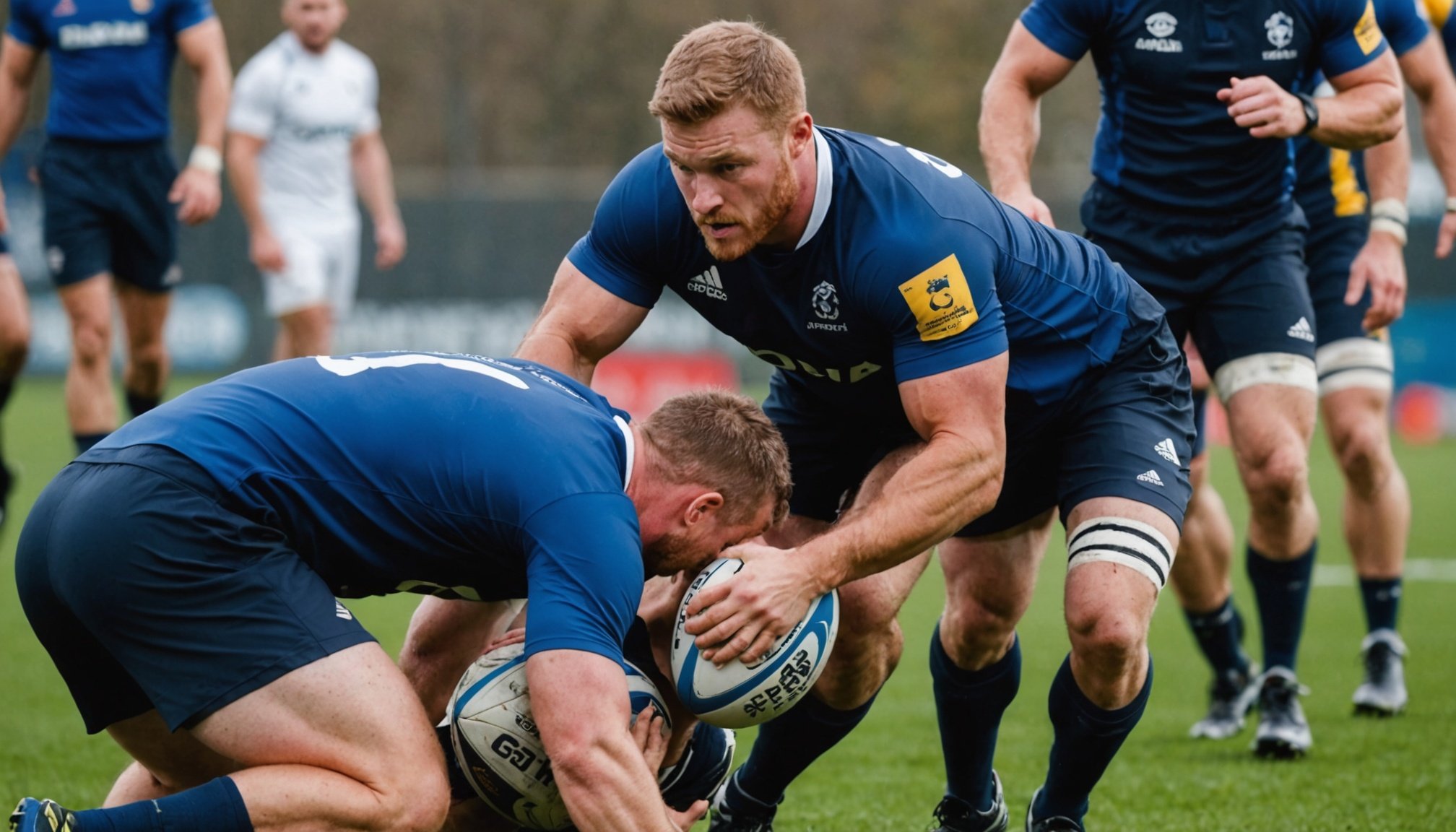In the competitive world of sports, athletes are constantly seeking ways to boost their performance. One of the most effective strategies is sports-specific strength training. This form of training focuses on enhancing performance by targeting the specific needs of an athlete according to the demands of their sport. In games like rugby and football, where physicality and speed are critical, the right kind of training can be the difference between victory and defeat. This article delves into how training can enhance performance, reduce injuries, and improve recovery for athletes engaged in contact sports.
The Importance of Sports-Specific Training
Sports-specific training is essential for athletes because it tailors workouts to meet the unique demands of their sport. In rugby and football, players must perform a wide range of movements, from sprinting and tackling to jumping and changing direction quickly. General strength training may not adequately prepare them for these specific actions.
Additional reading : What are the best practices for organizing and hosting a local sports event?
Research from PubMed indicates that tailored strength training programs can significantly enhance athletic performance by focusing on the key muscle groups and movement patterns relevant to a specific sport. For instance, rugby players benefit from exercises that improve their tackling strength and explosive power. This targeted approach is crucial because it not only increases an athlete’s overall strength but also enhances their ability to perform specific skills during a game.
Additionally, sports-specific strength training helps reduce the risk of injuries. By strengthening the muscles and joints used in specific movements, athletes can better withstand the physical demands of their sport. This is particularly important in contact sports, where the risk of injuries is high. By conditioning their bodies to handle the stresses of sprinting, tackling, and sudden stops, athletes can minimize the likelihood of injuries that can sideline them for extended periods.
Additional reading : What are the psychological benefits of participating in team sports for young athletes?
In summary, sports-specific training offers athletes the advantage of enhanced performance, increased strength, and reduced injury risk. By focusing on the particular skills and movements pertinent to rugby and football, athletes can enhance their overall game.
Key Components of Strength Training for Athletes
Strength training for athletes involves several key components that are designed to improve overall performance. First, understanding the body’s biomechanics is crucial. Athletes must engage in exercises that promote the movement patterns they will utilize on the field. For example, rugby players require resistance training that focuses on their core, legs, and upper body to tackle effectively and maintain balance.
Moreover, incorporating a variety of exercises can improve overall strength and agility. Exercises like squats, deadlifts, and lunges build foundational strength, while plyometric movements such as box jumps enhance explosive power. Combining these different types of exercises creates a well-rounded training program that addresses the various demands of the sport.
Furthermore, time management is essential when designing a training program. Athletes often have limited time to dedicate to strength training, given their commitment to practice and games. Thus, it is vital to prioritize exercises that yield the highest return on investment. Compound exercises, which work multiple muscle groups at once, are particularly effective in this regard, allowing for maximum strength gains in a shorter period.
In addition, athletes should focus on recovery strategies post-training. Proper recovery protocols, including stretching, hydration, and nutrition, are essential for muscle repair and growth. Athletes who neglect recovery may find themselves fatigued or unable to perform at their best, which can adversely affect their training outcomes.
Ultimately, successful strength training for athletes combines an understanding of biomechanics, exercise variety, efficient use of time, and effective recovery strategies. These components work together to create a comprehensive training program that enhances performance in sports like rugby and football.
Injury Prevention Through Tailored Strength Training
Injury prevention is a critical aspect of an athlete’s training regimen. Tailored strength training programs significantly lower the risk of injuries by preparing the body for the rigors of the sport. When athletes engage in exercises specific to the demands of their sport, they strengthen the muscles and ligaments involved in their movements, leading to improved stability and control.
Research shows that many injuries in sports stem from muscular imbalances or weaknesses. By identifying and addressing these weaknesses through specific exercises, athletes can create a more balanced physique. For instance, in rugby, athletes often experience injuries related to the shoulders and knees due to the physical nature of the game. By incorporating resistance training that focuses on these areas, athletes can strengthen the supporting muscles and improve joint stability, which is crucial for injury prevention.
Moreover, the incorporation of functional training exercises mimics the movements performed during a game. Functional exercises, such as lateral lunges and medicine ball throws, enhance athletic performance while also promoting coordination and balance. This not only prepares athletes for competition but also conditions their bodies to handle the unpredictable nature of sports, reducing the likelihood of injury.
Athletes should also regularly assess their training programs to ensure they adapt to their evolving needs. As they progress, it is essential to modify exercises and focus on new areas that may require strengthening. This proactive approach to injury prevention helps maintain peak performance levels throughout the season.
Ultimately, injury prevention through tailored strength training is fundamental for athletes. By focusing on sports-specific exercises, athletes can enhance their resilience against injuries, allowing them to perform at their best and enjoy a longer, healthier athletic career.
The Role of Recovery in Athletic Performance
Recovery is a crucial component of any athlete’s training regimen, often overlooked in the pursuit of performance enhancement. Effective recovery strategies are essential for muscle repair and growth, ensuring athletes can maintain high levels of performance throughout the season. After intense training sessions, athletes must allow their bodies time to recover to prevent overtraining and burnout.
One of the most effective recovery techniques is active recovery, which involves engaging in low-intensity activities post-training, such as light jogging, swimming, or cycling. These activities promote blood flow to the muscles, helping to reduce soreness and stiffness, facilitating a more efficient recovery process. Additionally, stretching and flexibility exercises play a significant role in maintaining range of motion and preventing injuries.
Nutrition also plays a pivotal role in recovery. Athletes should prioritize consuming a balanced diet, rich in proteins, carbohydrates, and healthy fats, to support muscle repair and energy replenishment during recovery periods. Furthermore, hydration is critical; maintaining adequate fluid levels can significantly affect an athlete’s performance and recovery capabilities.
Research from PubMed emphasizes the importance of sleep in recovery. It is during sleep that the body undergoes significant repair processes, making it vital for athletes to prioritize quality sleep as part of their recovery strategy. Sleep deprivation can lead to decreased performance, increased risk of injuries, and longer recovery times.
In summary, recovery is a vital aspect of athletic performance that should never be underestimated. By incorporating active recovery, proper nutrition, and prioritizing sleep, athletes can enhance their performance and longevity in sports like rugby and football.
In conclusion, sports-specific strength training is a powerful tool for enhancing athletic performance in sports like rugby and football. By focusing on tailored exercises that address the unique demands of these sports, athletes can improve their strength, reduce the risk of injuries, and enhance recovery processes. As the competitive landscape of sports continues to evolve, understanding the importance of strength training becomes increasingly critical for athletes aiming to maximize their potential.
The integration of effective recovery strategies further ensures that athletes can sustain their training efforts and perform at their peak during competitions. By prioritizing these components in their training regimen, athletes can not only enhance their performance but also maintain their physical health and longevity in their chosen sports. Whether you are a seasoned professional or an aspiring athlete, focusing on sports-specific strength training can set the foundation for a successful athletic career.











